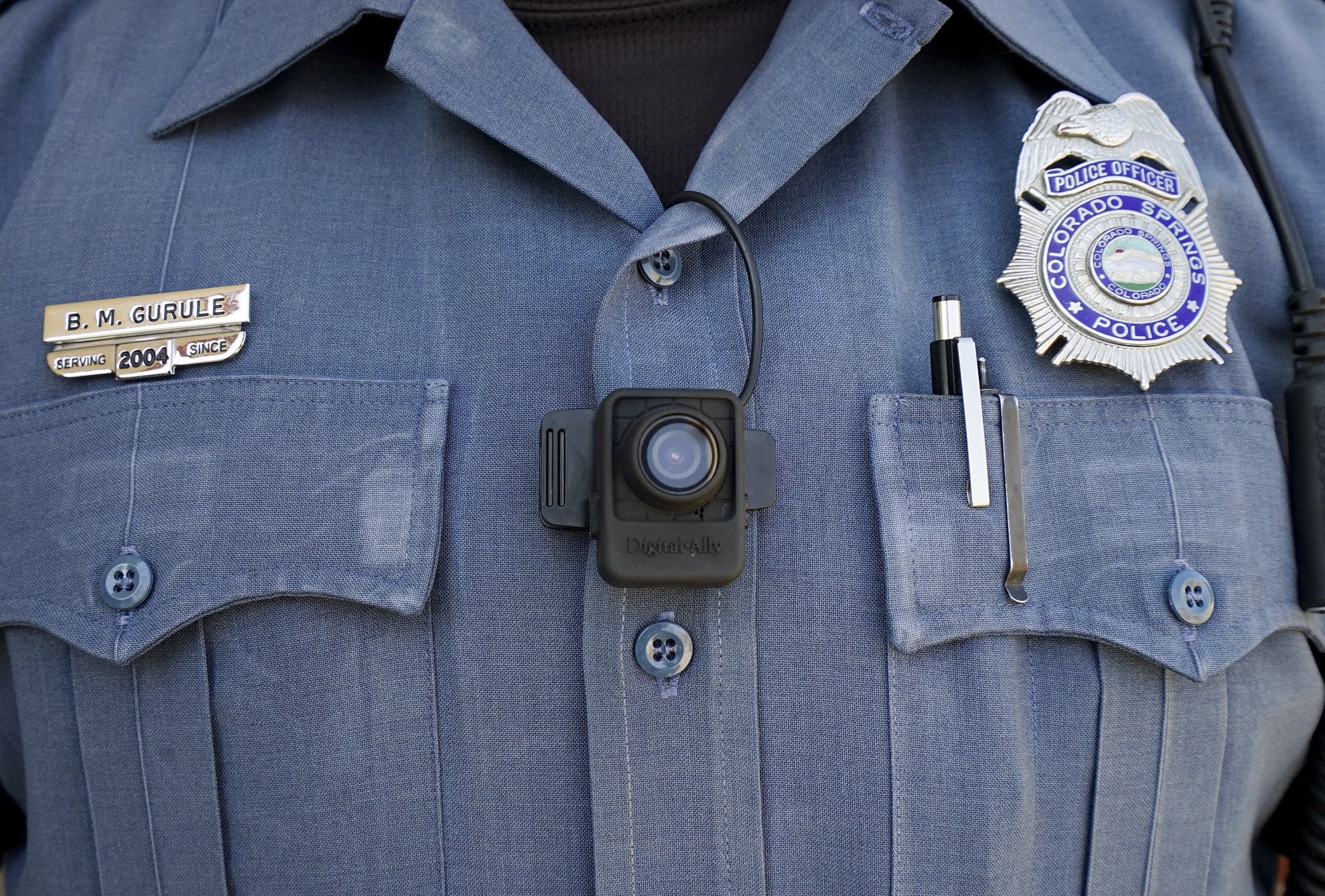
Correction appended, May 4, 2015.
The recent events in Baltimore have once again opened the question of mandatory police body cameras as a protective measure against forms of civic violence. Civil rights organizations such as the ACLU argue that visual evidence will make it easier to prosecute in cases of police brutality, while some police departments have welcomed the opportunity to review visual data for accountability programs and internal investigations. Even Hillary Clinton and President Barack Obama are on board. The Department of Justice announced Friday that it’s giving $20 million to police departments to buy body cameras as part of a three-year $75 million program.
But as history tells us, camera evidence does not an indictment make. In my 15 years of studying how experts work with images, it has become clear that the evidence never “speaks for itself.” Like words, images are open to interpretation.
In 1991, a witness recorded the beating of Rodney King by police officers in Los Angeles and the video was presented in a high-profile court case that gripped the nation. King was African American; the officers were white. Despite video evidence of what appeared to be brutality, the police officers were acquitted. Angry citizens took to the streets, prompting intervention from the National Guard.
UCLA professor Charles Goodwin describes how lawyers for and against King’s case interpreted the video for the jury in very different ways. When King jerked on the ground in apparent response to the beating, the LAPD expert witnesses described his movements as continued aggression and resisting arrest. It was no longer a slam-dunk case.
This confusion is not limited to video evidence. According to Jennifer Tucker, professor of history of science at Wesleyan University, photographs were also not believed when they were first presented as evidence in legal trials or scientific experiments. While some argued that cameras were impassive observers and therefore trustworthy recorders of objective evidence, everyone also knew that photographs could lie. Long before dating profile selfies, wispy visual effects and tricks of the light could place ghosts into family portraits or monsters in the nearby lake.
Because of this, people use sketches, image processing, diagrams and expert narration to get others to see what they see. In my book about the Mars Rover mission, I describe how scientists use these techniques to show their colleagues which minerals to look out for. I’ve also seen amateurs use the same techniques to show a face, a sasquatch, or the Virgin Mary on Mars.
This kind of visual suggestibility is powerful. Just like the first time you saw the rabbit in the duck-rabbit or the old woman instead of the young woman in those old gestalt images, once a new interpretation has been seen it cannot be unseen. This is problematic when images are supposed to provide evidence that speaks for itself. Further, when there are power differences between the groups who offer these competing interpretations, there are real-world implications for justice.
We have already seen such competing interpretations over video evidence of recent deaths in the news. In the video of Eric Garner’s apparent chokehold, experts described what was witnessed not as excessive force that broke the law, but a justified and trained response to Garner’s resisting arrest (others described this perceived “resistance” as a reflex while choking). Even a recent video from Baltimore of a woman slapping her son for participating in the riots has gone viral, with some upholding it as evidence of fear of police retaliation and others applauding her for disciplining her child.
All this points to a problem with body cams as a technological “quick fix.” It is not just that video evidence can be interpreted differently. It is that, like other evidential technologies before them, from photographs to fingerprinting and even DNA, body cams will enter into a social system involving courts, police departments and civil rights organizations that already are at loggerheads about the interpretation of police actions. As these communities endeavor to make a video “speak for itself,” they will inevitably speak for it, imposing competing interpretations and introducing uncertainty instead of proof.
Body cams are not a panacea. To be truly effective in the courts of law, they will require thoughtful legal parameters concerning the admission, interpretation, and power of video evidence: this in addition to considering the system-level changes and privacy protections that experts suggest. Otherwise, like other technologies before them, their “evidence” will get swept up into the continuing battles of one side versus another. And whose interpretation wins out will always say more about who is in power than who is in the right.
Correction: The original version of this story misstated Jennifer Tucker’s affiliation. She is a professor of history at Wesleyan University.
More Must-Reads from TIME
- Donald Trump Is TIME's 2024 Person of the Year
- Why We Chose Trump as Person of the Year
- Is Intermittent Fasting Good or Bad for You?
- The 100 Must-Read Books of 2024
- The 20 Best Christmas TV Episodes
- Column: If Optimism Feels Ridiculous Now, Try Hope
- The Future of Climate Action Is Trade Policy
- Merle Bombardieri Is Helping People Make the Baby Decision
Contact us at letters@time.com